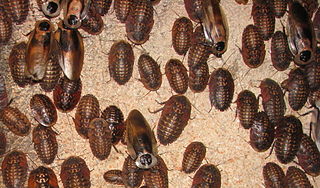
Giant cockroaches, or blaberids are the second-largest cockroach family by number of species.

Blattidae is a cockroach family in the order Blattodea containing several of the most common household cockroaches. Notable species include:

Ectobiidae is a family of the order Blattodea (cockroaches). This family contains many of the smaller common household pest cockroaches, among others. They are sometimes called wood cockroaches. A few notable species include:
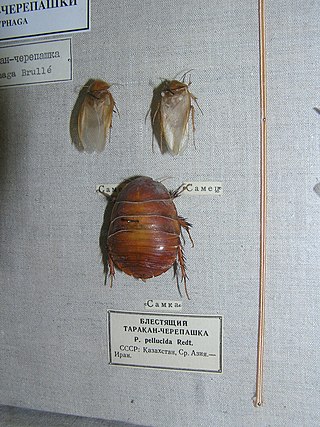
Corydiidae, previously known as Polyphagidae, is a family of the order Blattodea (cockroaches). Many are known as sand cockroaches. The family is divided into five subfamilies, comprising some 40 genera. One prominent species is the desert cockroach, Arenivaga investigata.
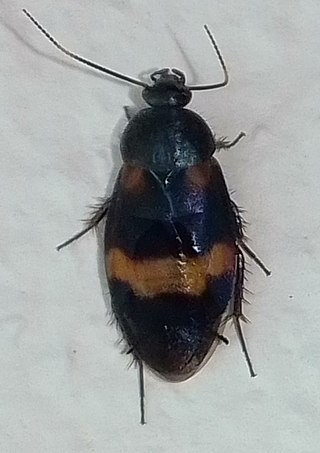
Holocompsa is a genus of hairy sand cockroaches in the family Corydiidae. It is the only genus in the subfamily Holocompsinae.

Panchlora is a genus of cockroaches, mostly found in South America and Central America. Most species in this genus are green in colour, but some are cream or grey.

Eublaberus is a genus of cockroaches closely related to Blaberus. Among the differences are proportionately somewhat shorter, stouter limbs, a broad blackish bar on the caudal margin (rear) of the pronotum, and angulation on the lateral margins (sides) of the pronotum.
Parcoblatta notha, the Arizona wood cockroach, is a species of wood cockroach that occurs only in the southwestern US state of Arizona. It is a relatively large, light colored member of the 12-species wood cockroach genus Parcoblatta. The male has fully developed wings and is able to fly, while the female wings are around half as long and does not fly.

The Pseudophyllodromiinae are a subfamily of cockroaches, in the family Ectobiidae, with a world-wide distribution.
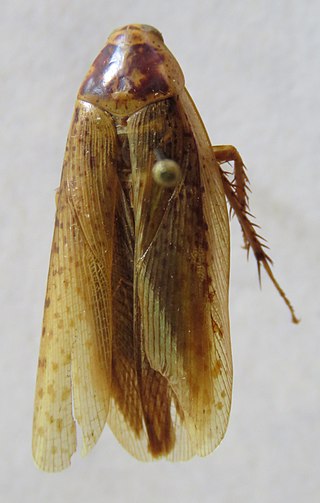
Epilampra is a genus of cockroach in the family Blaberidae. There are more than 70 described species in the genus Epilampra.

Neoblattella is a genus of cockroach in the family Ectobiidae.

Cariblatta is a genus of cockroach in the family Ectobiidae. There are more than 70 described species in Cariblatta.

Chorisoneura is a genus of cockroach in the family Ectobiidae. There are at least 90 described species in Chorisoneura.

Ischnoptera is a genus of cockroach in the family Ectobiidae.

Pseudomops is a genus of cockroach in the family Ectobiidae. There are more than 40 described species in Pseudomops.
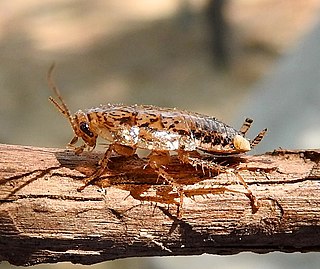
Latiblattella is a genus of cockroach in the family Ectobiidae.

Euthlastoblatta is a genus of cockroach in the family Ectobiidae. There are about nine described species in Euthlastoblatta.
Zetobora is a genus of cockroaches belonging to the family Blaberidae.

Balta is a genus of cockroaches in the sub family Pseudophyllodromiinae. Found in Asia, Africa, Australia and Oceania. The genus was created in 1893 by Johann Tepper.
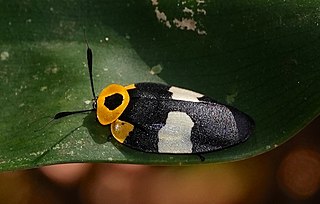
Eushelfordia pica is a species of cockroach in the family Ectobiidae. It is native to forests in the western Amazon basin in Ecuador, Peru and Brazil.


















